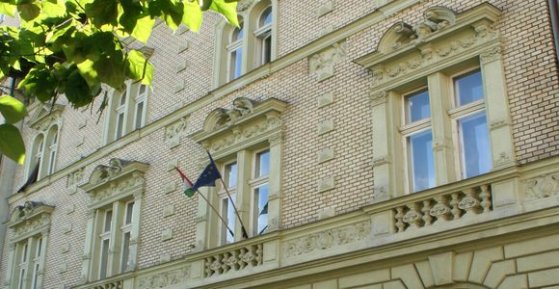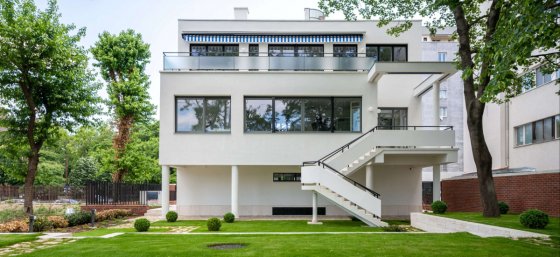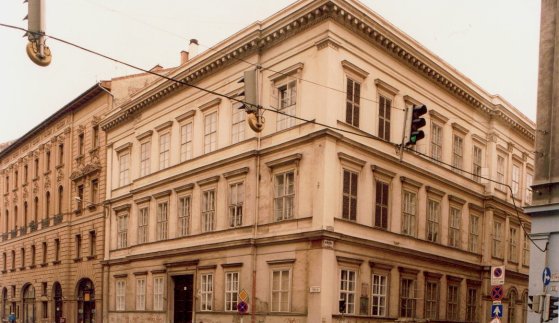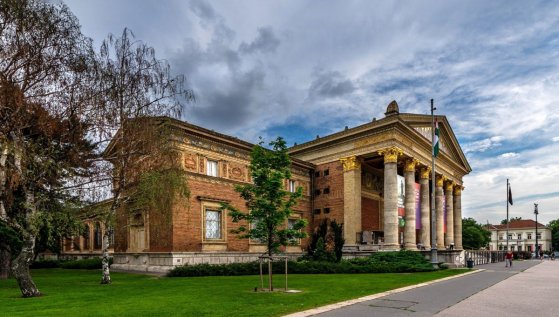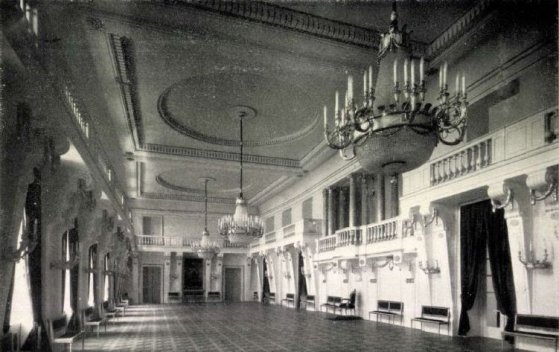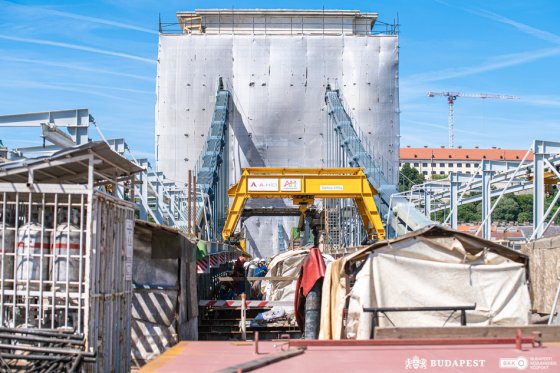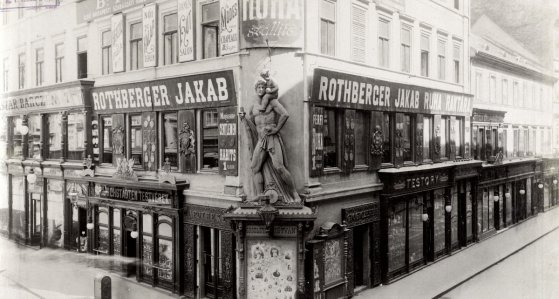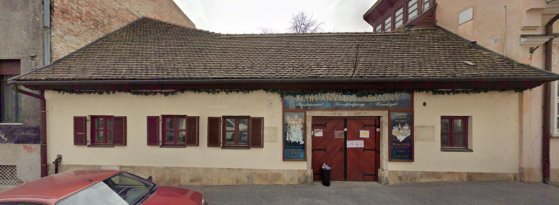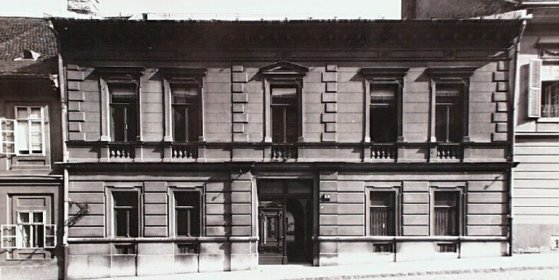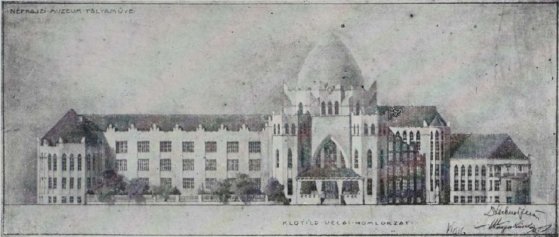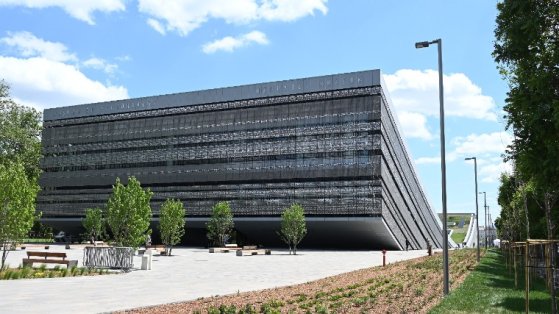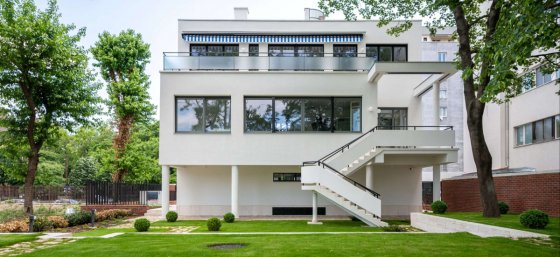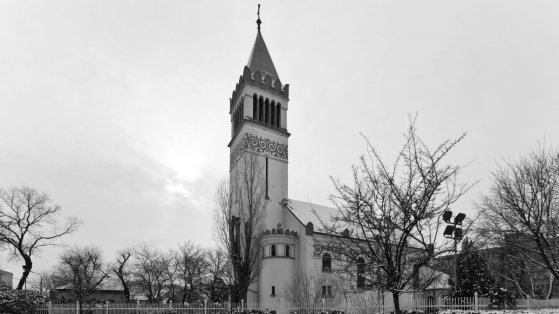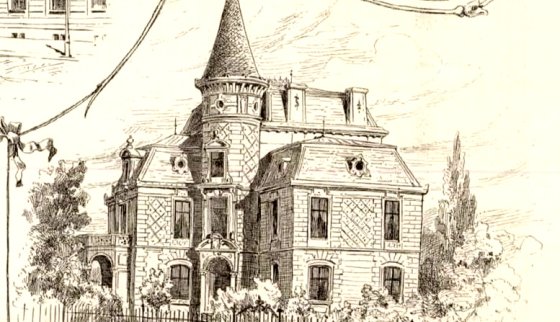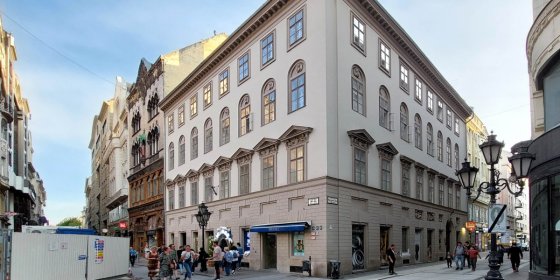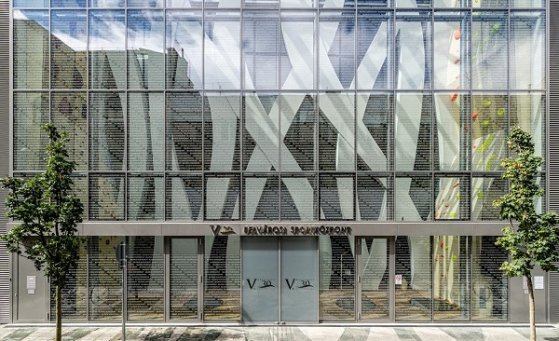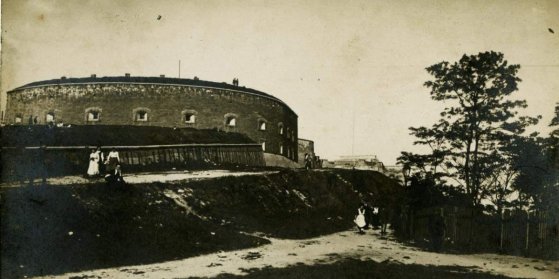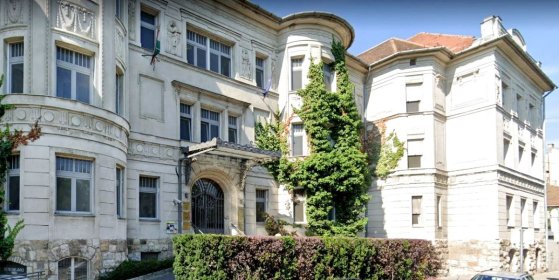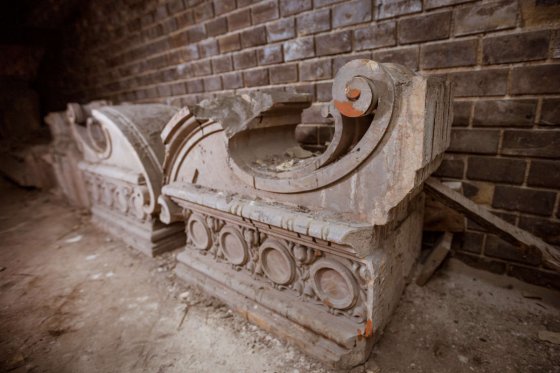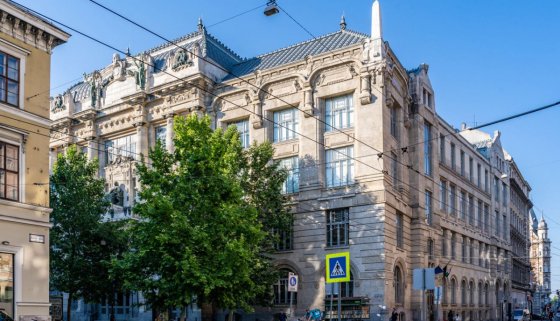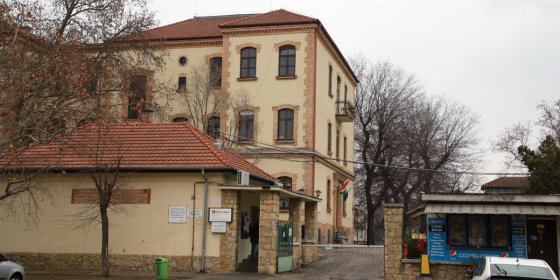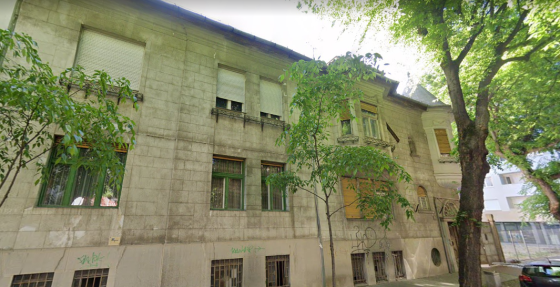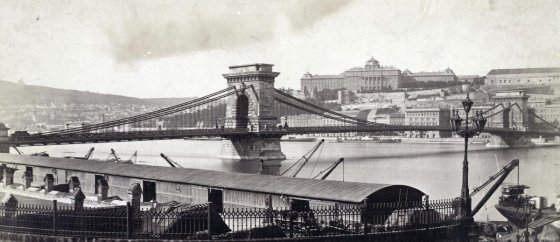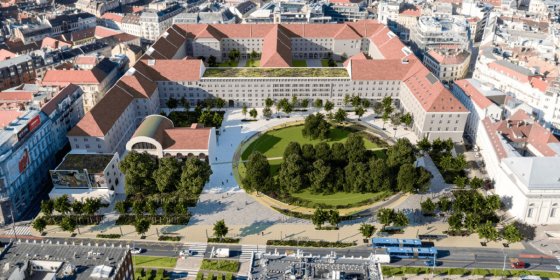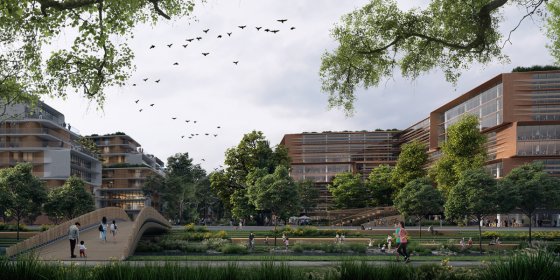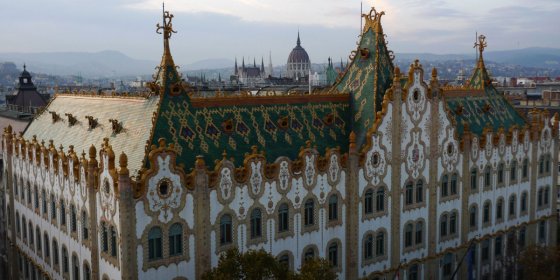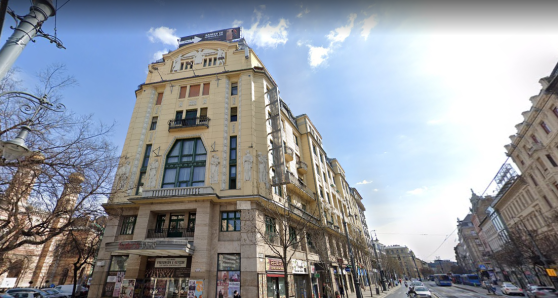 The „intertwined history” of the bridges and the city of Budapest
Which ideas and events have shaped the fate of bridges of Budapest and the cityscape? Alongside many other interesting facts, this question is also answered this newly published book by the Budapest City Archives, which introduces the history of bridges in Budapest.
The „intertwined history” of the bridges and the city of Budapest
Which ideas and events have shaped the fate of bridges of Budapest and the cityscape? Alongside many other interesting facts, this question is also answered this newly published book by the Budapest City Archives, which introduces the history of bridges in Budapest.
Architecture
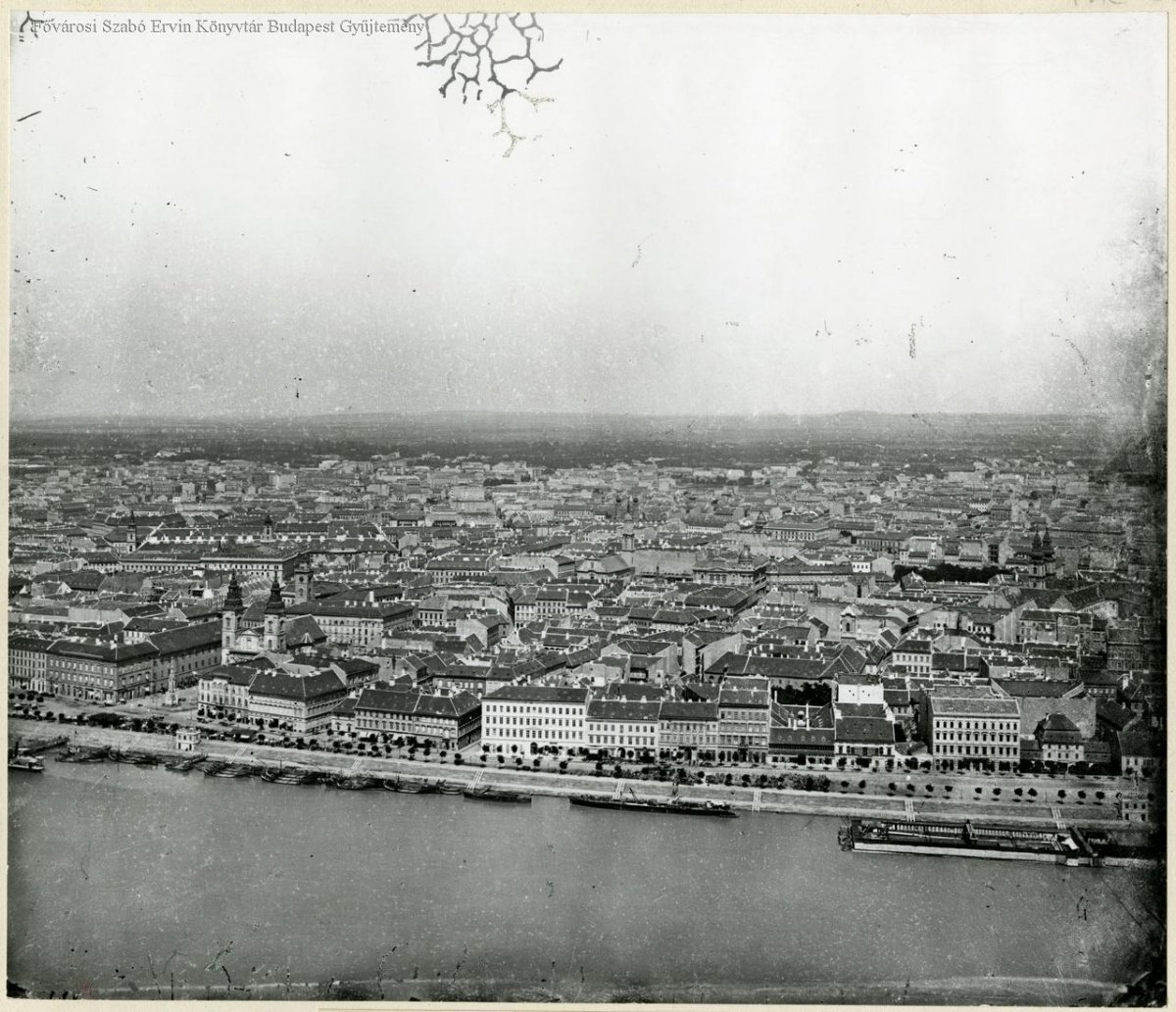 A plan made 150 years ago for the development of Pest - A special drawing of the Eskü Square Bridge
A plan made 150 years ago for the development of Pest - A special drawing of the Eskü Square Bridge
June 5, 2022 at 9:30 AM
150 years ago, there was no unified Budapest, but there was already a unified plan for the development of the future capital.
The building of Semmelweis University in Ferenc square is being renovated
May 31, 2022 at 5:30 PM
As part of the Healthy Budapest Program, the building of Semmelweis University in Ferenc Square will be expanded and renovated. During the investment, the historicist-style educational building in Ferencváros will be enriched with an elevator.
The world of modern architecture is revealed - PestBuda visited the Walter Rózsi Villa
May 31, 2022 at 9:00 AM
The new exhibition building of the Hungarian Museum of Architecture and Monument Protection Documentation Centre is in fact an exhibition object in itself. The institution has not had its own exhibition space for more than half a century, but now it has got a truly authentic one: a modern villa where visitors can not only get information about this style from wall texts and pictures, but also perceive its features in the space.
Only a house around the corner - An important place in the cultural history of Hungary on Üllői Road
May 30, 2022 at 2:00 PM
The residential house at 17 Üllői Road, on the corner of Erkel Street, does not stand out from its surroundings, it has no special decorations, it is proportionate and simple. Yet it is important and worth presenting because it was the home and meeting place of prominent personalities who had a tremendous impact on Hungarian literature, theatrical life, fine arts, and architecture.
Renovation of the Art Gallery may begin soon
May 30, 2022 at 11:30 AM
One of the wedges of Heroes' Square, the Art Gallery designed by Albert Schickedanz, will soon be renewed. The first phase of the renovation of the building, completed for the Millennium Exhibition in 1896, is the restoration of the façade, for which a heritage protection permit has recently been obtained.
The Hidden Treasure of Országház Street - A ceremonial hall with an adventurous story
May 29, 2022 at 9:00 AM
Walking in the Buda Castle, between the one- and two-storey houses of the narrow Országház Street, we would not even think that one of them hides a huge ceremonial hall. Although it is actually logical, as the name of the street already suggests that the greatest lords of the country once appeared here, and a representative hall was built for them. The life of the adventurous room took a turning point at the end of May 1929, as it was restored to its old glory after decades of neglect.
The widened underpasses of the Chain Bridge are ready
May 27, 2022 at 6:00 PM
The Chain Bridge is being renovated: the underpasses at the ends of the bridges are ready, which will be widened during the works, so in the future both pedestrians and cyclists will be able to fit side by side on both the Pest and Buda sides. At the same time, the suspension spindles of the bridge are being examined.
The Nagy Kristóf House was a real business centre in contemporary Pest
May 26, 2022 at 9:00 AM
The former house at 6 Váci Street is named after the huge statue of St. Christopher of the pharmacy in it, after which the area in front of the building was called Kristóf Square. However, according to the plans of József Hild, the building, which was expanded to two and then three floors, housed several other shops in addition to the pharmacy, including the fashion store of the clothing retailer Jakab Rothberger, which also won the title of imperial and royal court supplier.
A demolition application was filed for the Márványmenyasszony building
May 25, 2022 at 2:00 PM
The temporary protection ordered last year for the building of the legendary district I restaurant has recently expired, so on 24 May, an application was submitted for the demolition and the construction of a new residential building. Although the building has been rebuilt several times over the years, the cultural and historical significance of the Márványmenyasszony restaurant, founded in 1793, is given by the fact that it housed the wedding of István Széchenyi in 1836 and Miklós Wesselényi in 1845.
Gothic behind the gate - One of the most researched residential buildings of the Buda Castle is being renovated
May 25, 2022 at 9:00 AM
The one-storey listed building at 9 Országház Street will be renovated. One of the most researched residential buildings in the Buda Castle District was built in the 15th century, then rebuilt in the Baroque style in the 17th century. It underwent another major transformation in the 19th century. The Gothic sedilia in the front door of the house are of outstanding value in the Castle District, but its facade is also remarkable.
It could have been like that - A hundred-year-old plan for the Museum of Ethnography
May 24, 2022 at 9:00 AM
The new building of the Museum of Ethnography in the Városliget was ceremoniously handed over on Sunday. It is the first headquarters of the institution that was built for museum purposes during its hundred and fifty years of existence, although plans have been made for it earlier. Nearly a hundred years ago, in 1923, a tender was held for which various plans were submitted.
The St. László Community House in Istenhegy was handed over
May 23, 2022 at 5:00 PM
The new community house belonging to the parish church of St. Ladislaus in istenhegy was handed over in the 12th district. The investment has made the parish’s old dream come true, as they now have a community space where they can meet outside of Mass as part of various programs. The 150-seat function room of the building, which fits in with the church next to it, is equipped with a projection screen and a modern sound system, so they can accommodate any performance, concert or film screening.
The new building of the Ethnographic Museum in Városliget has been handed over
May 22, 2022 at 7:30 PM
The new building of the Ethnographic Museum in Városliget was ceremoniously handed over on Sunday, 22 May. As is well known, the investment was carried out within the framework of the Liget Budapest program on the site of the former huge car park on Dózsa György road behind the Art Gallery. It was stated at the opening: the Liget Budapest program, Europe's largest cultural investment, will be fully implemented.
Walter Rózsi Villa on Bajza Street was opened to the public
May 22, 2022 at 3:00 PM
The Hungarian Museum of Architecture and the Documentation Center for the Protection of Monuments moved into its renovated Walter Rózsi Villa, in style on World Museum Day, 18 May. It can be visited from 19 May. The special feature of the building, built in 1936, is that it is the only modernist villa in the capital that can be visited.
The Lutheran church in Kispest is 95 years old
May 22, 2022 at 9:00 AM
The name of the Templom (Church) Square in Kispest is eloquent, as three denominations also built their churches in this beautiful place: the Catholic, the Reformed and the Lutheran. The latter is the newest, although it is no longer young, since it was inaugurated on 22 May 1927, just ninety-five years ago. The special shape of its tower faithfully reflects the approach of the age of its construction, and its interior reflects Lutheran traditions.
Medieval castles inspired the former Fackh Villa on Andrássy Avenue
May 18, 2022 at 4:00 PM
It was damaged in World War II, so one of the charming villas on Andrássy Avenue was demolished, which was built as the family house of the director of the Western Railway company in the early 1880s. The building was bought by the Hungarian state at the beginning of the 20th century, which later handed it over to a female monastic order, so it is not surprising that a chapel was built there at that time. After the war, the decision-makers did not spare the villa, building a modern residential house in its place.
The oldest residential building on Váci Street
May 17, 2022 at 9:00 AM
The classicist corner building at 13 Váci Street and 15 Régiposta Street is the oldest still standing house on Váci Street, and according to research, it was the first three-storey residential building in the capital. The first art shop in Pest opened its doors here, then in the second half of the 19th century, it housed one of the most prestigious fashion salons in Europe, the Alter and Kiss Fashion House. Kálmán Mikszáth was a famous tenant. The house has undergone several mutilations over the past 215 years, but thanks to the restorations, much of its original beauty is still preserved today.
The Downtown Sports Center won an award
May 16, 2022 at 5:00 PM
The Downtown Sports Center in Vadász Street won an award at a professional competition in Slovenia. The award was given in six different categories, with the sports center and the design team receiving recognition in the architecture category.
Fortress over the city - The true history of the Citadel and common misconceptions
May 14, 2022 at 11:00 AM
A foreign tourist may not even believe that Gellért Hill was not created by human hands. Towering in the middle of the city, it offers stunning views, so the idea that it was built for tourism may be obvious. Yet it is a gift of nature, and the view could be used not only for pleasure but also for military purposes. This justified the construction of a fortress on the hilltop called the Citadel. The building will be completely reborn thanks to the Várkapitányság, we now have the opportunity to see the work in progress.
The clinic in Városmajor is being expanded with a new wing
May 13, 2022 at 9:00 PM
A new four-storey wing will be added to the Városmajor Cardiology and Vascular Clinic on the site below 70 Városmajor Street, where the Diagnostic Center will be located. The new and old blocks of the clinic are planned to be connected by a bridge.
Original decorative fireplaces were found during the research of the Buda Castle
May 12, 2022 at 1:00 PM
The experts of the Várkapitányság discovered another valuable find during the research carried out in the Buda Castle, as they found a marble fireplace in the dining room between the royal and princely suites, in addition to the ornamental fireplaces of the former Andrássy and Deák foyers in the Krisztinaváros wing. The finds will make a significant contribution to the most authentic reconstruction possible, as the fireplaces have always been in keeping with the room, so they can provide an important point of reference.
The new building of the Liszt Academy was handed over 115 years ago
May 12, 2022 at 10:00 AM
The palace of Liszt Academy in Liszt Ferenc Square was handed over on 12 May 1907, just 115 years ago. One of the most important buildings in the field of music was designed by the excellent architects Kálmán Giergl and Flóris Korb, but the outstanding craftsmen of the age also took part in the works. The architects worked on the plans for years to erect a modern building decorated with Hungarian elements according to the customer's request.
Károlyi Sándor Hospital will be expanded with a new wing, the main building will also be renovated
May 11, 2022 at 9:00 PM
The Károlyi Sándor Hospital in Újpest will be expanded with a new part of the building. In addition to the construction of the new seven-storey wing, the main building of the hospital, designed by Miklós Ybl, will also be renovated, but a building deemed dangerous will also be demolished in the area.
Colourful memento about a brilliant architect - The Postal Palace became the main work of Gyula Sándy
May 8, 2022 at 12:00 PM
Finding and viewing pieces of the architectural heritage of a city with a long history is an eternal tourist hit. Budapest stands out in this area mostly with the legacy of dualism and the two world wars: almost everyone have encountered the names of Miklós Ybl, Imre Steindl or Ödön Lechner, but if we dig deeper, it is impossible to list how many undeservedly lesser-known talents contributed to the decoration of the Hungarian capital. The building of the Buda Postal Palace, which adorns the south-western side of Széll Kálmán Square, is also connected to such a genius: a remarkable volume came out this year about Gyula Sándy's life and work, both from a professional and a layman's point of view.
Budapest was enriched with new monuments
May 3, 2022 at 2:00 PM
A 13th district real estate and a 21st district complex was declared a monument, thus further expanding the list of monuments in the capital. In addition to a number of rural properties published in the Hungarian Gazette last Friday, the service buildings of the residential building at 20 Kartács Street and the Kvassay Lock adjacent to the Kvassay Bridge received monument protection.
Before the big changes - Budapest at the time of the compromise
May 2, 2022 at 11:00 AM
The Austro-Hungarian Compromise, established in 1867, ushered in one of Hungary's heyday. Under the Compromise of 155 years ago, a dual system was created - hence our common word dualism, which is used to characterise the period up to 1918. This upswing has brought about great changes: as a result of industrialisation, more and more people have moved to the cities, and the population of Budapest has grown exponentially. But what was the capital like in the second half of the 1860s?
This will be the Town Hall Park - The results of the design competition have been announced
April 29, 2022 at 3:00 PM
Next year, the renovation of the area on the Károly boulevard side of the Central Town Hall, which was used as a car park, may begin. The results of last year’s design competition were announced today, with the winning plan to preserve the existing trees in an area of about 8,000 square meters, next to which new ones will be planted, a number of new benches will be erected and there will also be bumps. The renovation of Town Hall Park is expected to be completed by 2024.
New city center is being built in Zugló - Renewal of Bosnian Square and its surroundings may begin soon
April 26, 2022 at 4:00 PM
Renovation of Bosnyák Square, intended as the main square of the 14th district, may begin soon. It is planned that not only a new town hall, specialist clinic and fair hall will be built, but also a completely new quarter, and the affected section of the Rákos stream will be rehabilitated. The investment, previously declared a priority, has now received a building permit.
Bees on the roof - The inner hall of the Postal Savings Bank is being renovated
April 25, 2022 at 9:00 AM
In the vicinity of Szabadság Square, the Postatakarékpénztár [Postal Savings Bank], which was built at the turn of the century, has been being renovated for months. In addition to Ödön Lechner's main work, three other works by the master are also being restored: the Museum of Applied Arts, the Balás Sipeki Villa next to the Városliget and the Drechsler Palace on Andrássy Avenue. While the latter are undergoing a larger-scale change visible from the outside, in the case of the Postal Savings Bank, its internal box office will get back its original dome. Once upon a time, this was also characterized by an imaginative ornamentation similar to the façade, but it was remodelled over time according to the needs of its use, but it was not spared by the storms of history.
The monumental building on Károly boulevard will soon receive its ornate domes back
April 22, 2022 at 5:00 PM
The imposing roof of the Art Nouveau apartment building at 3 / A Károly boulevard will be rebuilt soon. The roof of the house, built after the turn of the century, was damaged in World War II and was later restored in a simplified manner. The roof reconstruction of the building, which is now home to the Downtown Theater, was made a priority investment by a government decree issued last week.
More articles
 The „intertwined history” of the bridges and the city of Budapest
Which ideas and events have shaped the fate of bridges of Budapest and the cityscape? Alongside many other interesting facts, this question is also answered this newly published book by the Budapest City Archives, which introduces the history of bridges in Budapest.
The „intertwined history” of the bridges and the city of Budapest
Which ideas and events have shaped the fate of bridges of Budapest and the cityscape? Alongside many other interesting facts, this question is also answered this newly published book by the Budapest City Archives, which introduces the history of bridges in Budapest.
 The Bridge Report, which brought a turning point in the history of Budapest
A travel report that changed the history of Pest and Buda, as well as Hungary. The little book contributed to the change of half a thousand years of legal customs and the implementation of an investment of unprecedented size and technical quality. This book was The Bridge Report [Hídjelentés in Hungarian].
The Bridge Report, which brought a turning point in the history of Budapest
A travel report that changed the history of Pest and Buda, as well as Hungary. The little book contributed to the change of half a thousand years of legal customs and the implementation of an investment of unprecedented size and technical quality. This book was The Bridge Report [Hídjelentés in Hungarian].
 Drama on the university wall - The heroic monument was planned 95 years ago
In the constant hustle and bustle of the Egyetem Square in Pest, the students may not even notice the monument that decorates the short section of wall between the church and the central building of ELTE. However, it commemorates their predecessors, the heroes who fought for their country in World War I, and those who heroically helped them. The first design of the dramatically collapsing soldier was born in 1928, ninety-five years ago.
Drama on the university wall - The heroic monument was planned 95 years ago
In the constant hustle and bustle of the Egyetem Square in Pest, the students may not even notice the monument that decorates the short section of wall between the church and the central building of ELTE. However, it commemorates their predecessors, the heroes who fought for their country in World War I, and those who heroically helped them. The first design of the dramatically collapsing soldier was born in 1928, ninety-five years ago.

